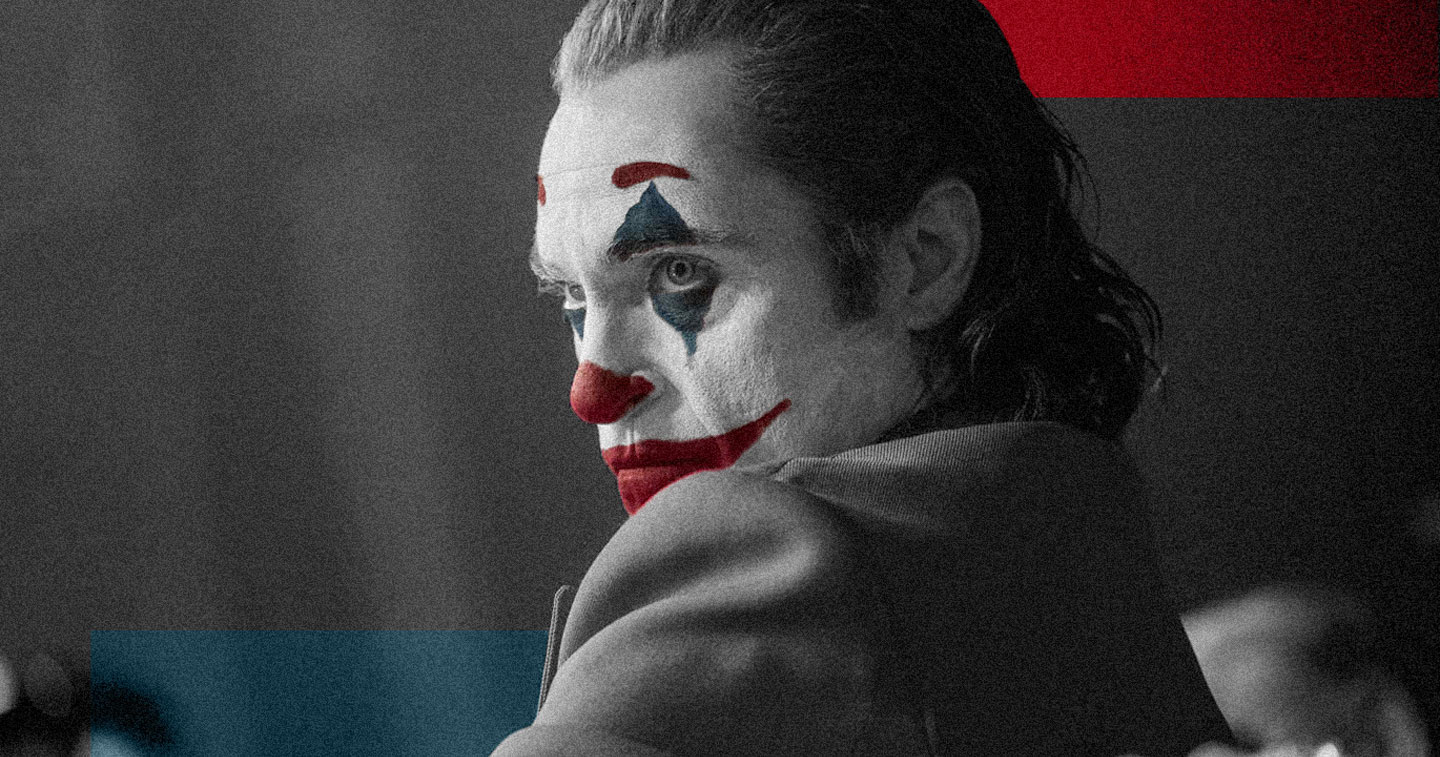Cesar Romero. Jack Nicholson. Mark Hamill. Heath Ledger. Jared Leto. Several gentlemen have given their own spin on one of the greatest characters in comics history, “the Clown Prince of Crime” himself, the Joker. In all of those previous instances, the Joker has been cast opposite an equally stellar opposite number in the Batman. Adam West, Michael Keaton, Kevin Conroy, Christian Bale, and Ben Affleck, respectively. What then happens when a film is made to revolve completely around the Joker? A film that takes elements of his comic origins and previous adaptations of his story but gets to stand alone? A film that (gasp!) has no Batman to set the madman up against? The result is the brilliant film by Todd Phillips, simply titled Joker.
Arthur Fleck (Joaquin Phoenix) is barely getting by in Gotham City. Diagnosed with an uncontrollable urge to laugh at the most inappropriate times, Arthur works as a party clown while caring for his mother Penny (Frances Conroy) in their tiny apartment. With Gotham decaying morally and financially, even kids abuse Arthur, beating him up outside a store for no reason but their own perverse satisfaction. He dreams of one day appearing on Late Night with Murray Franklin to share his stand-up comedy routine with Franklin (Robert De Niro) and because his mother has always told him that Arthur is meant to make people smile.
When single mother Sophie Dumond (Zazie Beetz) and her daughter move in next door, Arthur yearns to start a conversation with her in hopes of eventually being in a relationship. As news of how Arthur was beat up spreads at work, fellow clown Russell (Glenn Fleshler) hands Arthur a gun to protect himself saying that the latter can just pay him later. Things really take a turn for the worse when, during a night on one of the graffiti-laden subway cars, three young and white Wall Street investment bankers don’t appreciate Arthur’s laughter.
Trying to be a stand-up comedian, Arthur writes his jokes in a notebook that also serves as his journal to write down his thoughts for review by a clinically-assigned social worker who also provides Arthur’s medication for his condition. While all of this is happening, Penny Fleck has been writing letters to her former employer Thomas Wayne (Brett Cullen) asking for financial support and revealing a dark secret. Arthur comes upon one of these letters but his mom’s health takes a turn for the worse when the police question her. Penny is confined to the hospital just around the time that producers behind Late Night with Murray Franklin air snippets of Arthur’s comedy routine. As Arthur is invited to make an appearance on the talk show, he loses all of his previous inhibitions as he embraces a new and more sinister persona that he feels is the real him.
Todd Phillips’ vision of Gotham City isn’t quite the dark and festering cesspool previously shown by fellow filmmakers Tim Burton and Christopher Nolan. It is dark, though it is actually the morals of its citizens that seem to be manifesting that darkness more than the buildings and architecture. During the beginning and middle of the film, one can’t help but feel sorry for Phoenix’s Arthur as it seems that he’s only trying to make ends meet via honest means yet the morally-inept people around him just want to keep beating him down.
In the Joker’s comic origins, it has long been established that the character, while operating as “the Red Hood” falls into a vat of chemicals while running afoul of Batman. The chemicals turn his skin pale white, his hair green, his face permanently plastered into a smile, all driving the man insane. None of those elements are present in Joker. At first glance, it would seem that Gotham City slowly turns Arthur into a madman. It is revealed later in the film, however, that the turn actually began much earlier, during Arthur’s childhood, because his mother had psychological issues and didn’t protect Arthur from child abuse.
It is the revelation of these childhood traumas (which Arthur was either to young to recall or he had chosen to lock away in his memory) coupled with the beatings that he had been receiving from bystanders and even his employers, as well as the sheer joy he felt when finding the power behind a revolver that finally unlocked the evil within. As Arthur dyed his hair and put on the make-up, he became his real self, no longer a facsimile of a human being, but a sadistic clown who was tired of what life had given him.
Phillips clearly pulls from different source materials when crafting this film, and not just from the printed page. His Gotham looks and feels like a film shot in New York City from the late 1970s or early 1980s, complete with its yellow hues, the garbage that seems prevalent throughout its streets, and the graffiti that was all over its buildings and subways. De Niro’s Murray Franklin is a clear nod to the actor’s own performance in 1983’s The King of Comedy, where in De Niro was the wannabe stand-up comedian to Jerry Lewis’ talk show host. In the 1986 comic classic The Dark Knight Returns by writer/artist Frank Miller, the Joker (believed to have been cured of his insanity) appears on The David Endochrine Show. After engaging in small talk with the host and other guests, the psychopath then kills everyone in the studio.
What Phillips and Phoenix have done so well in this film is to show an unsettling and intense picture of the human condition, how a series of really bad circumstances coupled with hidden abuse can totally unhinge an individual. In no way does Joker glorify violence. The scenes that show violence will make you feel very uncomfortable and will likely leave you talking and thinking hours or even days after. Phillips spends lots of time doing closeups and extreme closeups of Phoenix’s face, so much so that you notice the widow’s peak in his hair or the teeth that are not perfect. When Phoenix puts on the make-up for the film’s climax, he does it with such enthusiasm that he seems to finally be free of the guilt and burden that trying to be part of society has placed on him. He is finally free and this real form of the Joker is a fearsome sight indeed.










